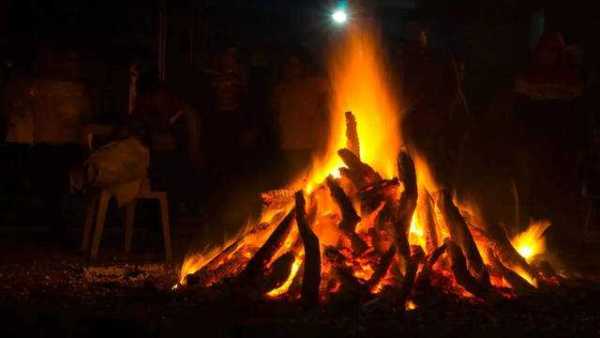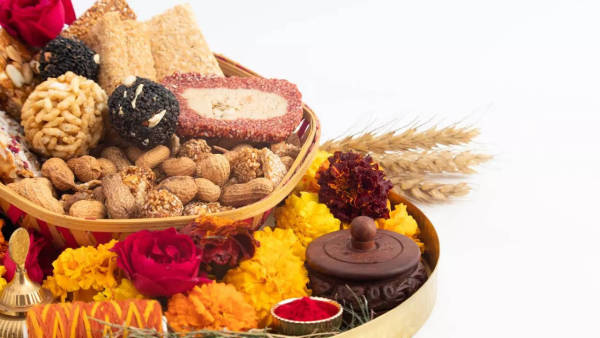
Lohri, a festival of joy, cheer, and new beginnings, is celebrated all around India, especially in the Northern states, and is filled with love, warmth, and energy.
States like Punjab, Haryana, and Delhi have grand Lohri celebrations , with societies and communities gathering together around the sacred fire, and distributing food items like jaggery, sugarcane, sesame, and more.
Lohri, and Makar Sankranti the next day, mark the end of winter chills, and the beginning of longer days and more sunshine.
Lohri 2025
In 2025, Lohri will be celebrated on Monday, January 13.
According to Drik Panchang, “Lohri on Monday, January 13, 2025
Lohri Sankranti Moment - 09:03 AM, Jan 14
Makar Sankranti on Tuesday, January 14, 2025”
History of the festival of Lohri
The origins of Lohri are mentioned in folklore and family traditions, been followed for decades. Lohri has forever been a harvest festival and was especially important for families whose livelihood depended on their farms and agriculture.
Today, it is also connected to the worship of fire, a symbol of warmth, as after Lohri the harsh winters calm down and the days finally feel longer. People prepare special food and offerings for the sacred fire and this is believed to bring prosperity and keep away evil.
Significance of Lohri
The importance of Lohri is truly felt by people whose lives depend on agriculture. The Lohri day does not just bring in happiness and celebration, but also warmth and is important for more crops to grow and flourish.
Lohri is celebrated at the time when farmers harvest their rabi crops, especially sugarcane, wheat, and mustard, and it ends the sowing season and the beginning of a new agricultural cycle. And so the festival doubles as a way to thank nature and the divine for the harvest.

In modern times, Lohri gives people a chance to sit together and celebrate with others, the family, community, and neighbours. In a world and time when making time even for ourselves is difficult, it is the age-old festivals that give people a chance to reconnect with others.
In societies and communities, people come together in the evening, light a bonfire, sing folk songs, dance, share food, offer food to the fire, and much more.
The Lohri story
One of the most famous Lohri stories is about Dulla Bhatti, the man who saved countless girls from Mughal rulers and appointed him as their guardian.
According to folklore, Dulla Bhatti lived during the reign of Mughal Emperor Akbar and was a Muslim Rajput. He became a local hero for his rebellion against the Mughal Empire’s oppressive practices, similar to his father and grandfather, and fought against the regimes of oppression.
Even today, Dulla Bhatti is referred to as the Robin Hood of Punjab, the rebel against Mughals, and the guardian of young girls.
Today, songs are sung in his praise, the most famous one being ‘Sunder Mundriye’ as it is believed that he saved two girls from being sold off as slaves and got them married around the time of Lohri.
Lohri celebrations today
Lohri celebrations today are as grand as ever, but also pretty wholesome.
The bonfire is the centerpiece of Lohri festivities, and people gather around it, singing songs and performing traditional dances like bhangra and giddha. The fire is offered things like sesame seeds, jaggery, popcorn, and peanuts, and is seen as a sign of gratitude.
Then there are folk songs and dances, with men and women performing bhangra and giddha, the beats of the dhol, and an energetic atmosphere all around.
People also prepare Lohri special foods , like makki ki roti and saag (usually the last of the season), til ke laddoo, gajjak, chikki, revri made with sesame and jaggery, and more.
In many families, the first Lohri of a newborn baby, and a newly married couple is also of importance. As Lohri is seen as a festival of harvest, fertility, and good energies, new mothers and new wives are given the blessings of good life, healthy babies, happy marriages, and much more.
In fact, in many families, the new couple or the new mother and baby, are given special treatment, special puja is organised with a select few members of the family, and prasad is offered to others from the puja.
 Lohri, a festival of joy, cheer, and new beginnings, is celebrated all around India, especially in the Northern states, and is filled with love, warmth, and energy.
Lohri, a festival of joy, cheer, and new beginnings, is celebrated all around India, especially in the Northern states, and is filled with love, warmth, and energy.
